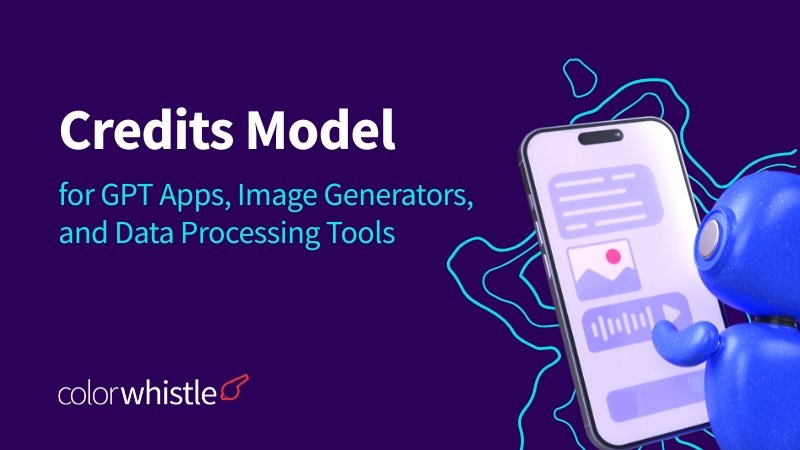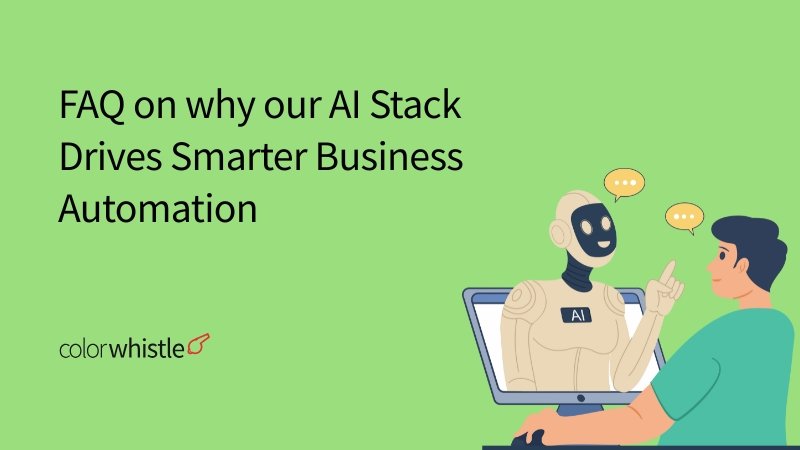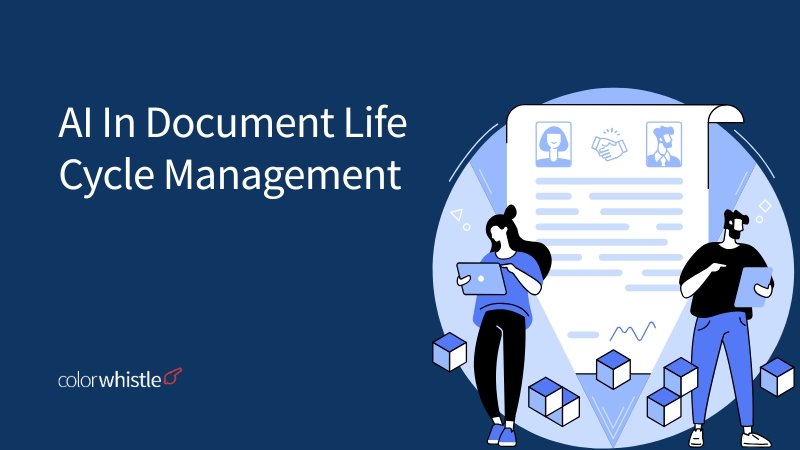Being the key drivers of technological development, Artificial Intelligence (AI) and Machine Learning (ML) have become part of every industry. The education industry is not an exception while considering technological advancement. It offers a wide range of applications such as Adaptive Learning System, Aided Teaching System and Institute Administration System, and more to make the process of eLearning more effective.
We have already analyzed the impact of AI in the E-learning industry for 2021 and beyond. As an educator, you may get an idea or two on website or web app development using AI technologies for your education institution.
In this blog, you will find some real-life examples and use-cases of AI/ML in the Education industry.
Artificial Intelligence Innovation in eLearning Industry
AI is an intelligent tutoring system that helps to replace human processes such as learning, tutoring, adapting, and synthesizing. AI makes learning more accessible by developing systems that employ language processing algorithms to subtitle live speech, summarize main points, and function as a virtual assistant for learners who need assistance to access course materials.
The currently available AI applications in EdTech are,
- Learner-oriented – to make learning better.
- Instructor-oriented – to assess student learning better.
- Institutional system-oriented – to better manage learning outcomes.
The use of AI technologies in eLearning enables learners and instructors to leverage the following e-learning solutions:
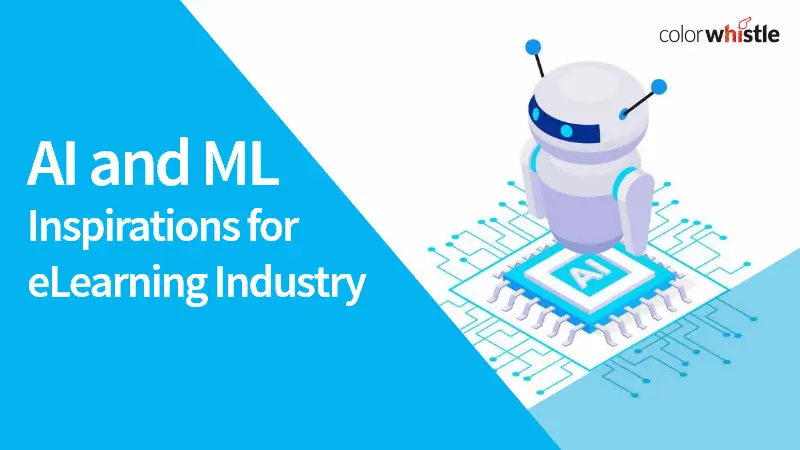
- Smart Content: Smart content mainly consists of different types of virtual content, true or false format content, digital textbooks, and video lectures.
- Intelligent Tutoring Systems (ITS): It provides customized feedback to learners without the intervention of a human teacher.
- Personalization: ML algorithms can deliver eLearning content according to the student’s intellectual capacity by using the recognition pattern.
- Virtual Facilitators and Learning Environments: Virtual reality facilitates enhanced learning by allowing them to view and interact with virtual features.
Five Ways AI is Changing the E-learning Industry
AI for Learners
Real-time interrogation: Artificial intelligence can serve as a virtual tutor and provide answers to your questions. By incorporating AI into eLearning courses, learners can clear their doubts by asking the AI engine and obtaining a suitable response.
Duolingo’s AI-powered chatbots allow students to have life-like conversations and prepare for those that will later happen in real life.
Google Classroom can check the originality of a student’s work so the teacher doesn’t have to.
Improve accessibility: Artificial intelligence has been utilized to better the lives of individuals with impairments. Microsoft’s free app uses artificial intelligence to narrate the world to the blind. It can read literature, recognize goods, describe sceneries, currencies, and describe the person in front of you, including the emotion on their face.
- Artificial intelligence may be used to translate “spoken language” into captions and transcripts.
- AI-powered apps, such as ‘Seeing AI,’ may be integrated into eLearning courses to help learners.
- Individuals suffering from mobility difficulties can use AI as a virtual assistant that reacts to voice instructions.
Make New Content: Artificial intelligence is also being tested for the generation of new content. Using current online training tools, AI also can create replies. Shortly, AI can produce the whole material of an eLearning course, relieving instructional designers of a significant burden.
The Slackwood Elementary School in New Jersey has been using the teaching assistant Happy Numbers. This system analyzes students’ work in math courses and shows teachers who in the classroom are struggling the most. It can offer personalized suggestions on how to help them improve.
Netex Learning is a platform that enables professors to develop, manage as well as update digital content in a single location. It also encourages students by enabling microlearning, skills mapping, as well as content recommendations.
Personalized learning: AI may be used to track an individual’s prior performance and utilize that data to modify present learning material resulting in a more customized learning experience.
The Denver Public Schools district announced its plan to integrate AI assistants for younger students. This will help kids engage and participate more frequently in conversations and class activities.
Companies like Content Technologies and Carnegie Learning are presently developing intelligent instruction design and digital platforms which adopt AI for offering learning, testing, and feedback to students from pre-K to college level. The system goes on to detect knowledge gaps and redirects to fresh topics whenever suitable
Natural Language Processing (NLP): Natural Language Processing, or NLP, is a subfield of artificial intelligence focused on assisting computers in understanding and processing human languages. When you combine your eLearning courses with an AI assistant, you may ask questions in the language of your choice for clarification. It makes learning simpler and engaging.
NLP and education can work together not just to help students to submit better quality work to their teachers, say with Grammarly – an NLP-based software to analyze text and provides suggestions for improvements, but instead for teachers to use the NLP technology to see what is happening with their students and their individual abilities.
Presentation Translator is a simple, free PowerPoint plug-in that develops subtitles in real-time of what the teacher is saying. This also helps aid the sick absentees as well as students requiring a different pace or level when it comes to learning.
AI for Educators
- By automating daily tasks, evaluating student performance, and narrowing the educational gap, AI can help free up instructors’ time.
- It is very unusual for learners to require additional assistance outside of the classroom. AI instructors and chatbots are ideal to provide teaching assistance at any time and anywhere.
- Although no chatbot can fully replace a teacher, AI technologies can assist students in honing their abilities and improving weak points outside of the classroom. They offer a one-on-one learning experience without the teacher being available to answer questions at 24hrs.
Florida has taken advantage of AI and integrated an automated checking system into its Putnam County School District. GoGuardian monitors and flags any sites or platforms on the internet that are potentially sensitive, inappropriate, or harmful, keeping students safe.
Machine Learning Innovation in eLearning Industry
Being a subset of AI, Machine Learning (ML) helps the education industry to capture a wide range of information and transform it into a structured database.
ML is being used by educators to identify learning inadequacies in kids sooner and
take action to enhance success and retention. Through localization, transcription, text-to-speech, and customization, ML is broadening the reach and effect of online learning content.
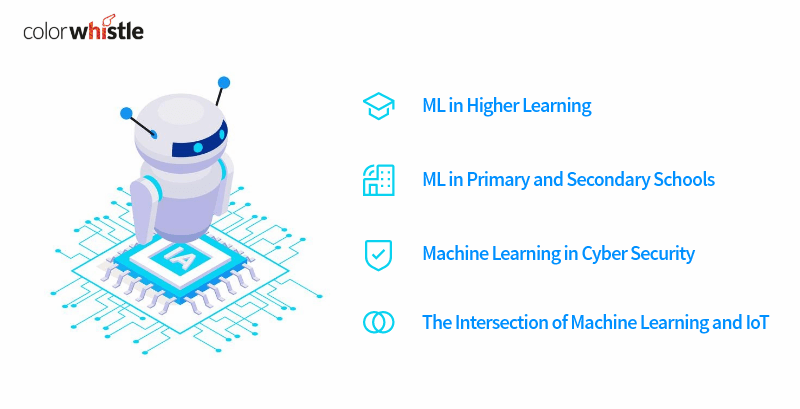
ML in Higher Learning: Identifying and attracting the proper students, forecasting enrolment, predicting outcomes. Make the campus experience smarter, safer, and more efficient by modernizing it.
ML in Primary and Secondary Schools: Personalized material and ML-enabled teaching aids and tutors can boost instructor productivity and effectiveness. Enhance the effectiveness of evaluations and grading. Make online self-service options available to parents and students.
Machine Learning in Cyber Security: With the increasing emphasis on eLearning, ML is significant to improving cybersecurity. Machine Learning has several applications in cybersecurity, including enhancing available antivirus software, combating cybercrime, recognizing cyber dangers, and so on.
The Intersection of Machine Learning and IoT: IoT devices are becoming increasingly common, to the point that there may be more than 64 billion IoT devices by 2025. Machine Learning techniques may be used to transform data gathered by IoT devices into actionable outputs.
Four Ways ML is Changing the E-learning Industry
Experimental Learning: The process of learning by engaging students with practical knowledge is known as experiential learning. Students are better able to connect theories and methods learned in the classroom to real-world situations when they are engaged in hands-on experiences and reflection.
Duolingo makes learning a new language feel almost like a game. Using this data and ML, Duolingo created a statistical model of how long users could recall new words before forgetting and needing a refresher.
Wide access to educational resources: ML applications enable learners and educators to access educational material that is freely available to use, adapt, and share. ML facilitates a learning environment that is safe enough to allow learning to occur and equitably distributed learning opportunities to all.
As per a podcast by Cognilytica, the freshmen at Arizona State University are utilizing Amazon Alexa as an attempt to provide them much more regular and concise information regarding their campus needs.
Academic Connectivity: Technological simulations provide students with hands-on experience, which frequently aids in their retention of material. It’s the equivalent of having a lab during class. Technology advancements have made learning considerably easier for pupils who study visually – those who require visual representations or films of concepts that are difficult to comprehend in traditional textbook and lecture approaches. Tutors have an advantage that most professors do not: they can use modern technologies to assist their pupils to learn.
The SchooLinks platform assists students in preparing for courses, college, and careers with tasks such as creating a resume, searching for colleges, calculating financial aid, planning which courses to take, and more. Machine Learning algorithms are used to personalize the entire experience.
CollegeAI employs ML to assist prospective college students in selecting the best schools for them based on the information they provide. Users are also informed as to why a particular school is or is not a suitable choice.
Tutoring: Technology is enabling tutors and other education professionals to go beyond the classroom and textbooks to help students learn. Online courses and lectures, 3-D modeling, movies, infographics, and other online media enable students to move beyond memorizing and notetaking. Technological advancements allow students to completely immerse themselves in the content, repeat lectures, and get a deeper grasp of the material through multiple learning routes.
Cognii is an AI-powered virtual learning assistant that offers virtual coaching, rapid grading of open-ended replies, and study and review tools. Individualization and improvement of learning and feedback are achieved via the application of ML.
Testive is a personalized online SAT/ACT tutor that utilizes machine learning
and human coaches to assist students to improve their standardized test results.
In Conclusion …
The inclusion of AI/ML applications in the e-learning industry is now at a stage beyond simply a ‘buzz’ and many educational institutions are readily adopting it. While these applications are quite useful on their own, the best results are attained when human instructors oversee the process.
Apart from the obvious benefits, AI/ML applications collect & generate a lot of user data which can result in privacy concerns in jurisdictions where data protection laws are not implemented. The truth be told, if the laws are to impede data collection & processing in every sphere, the digital bubble would burst!
If you liked this blog post, don’t forget to comment down below.
What’s Next?
Now that you’ve had the chance to explore our blog, it’s time to take the next step and see what opportunities await!


